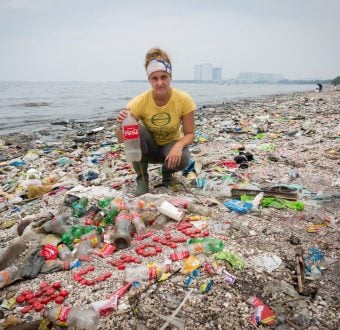“There is enormous enthusiasm and interest in PVC alternatives in the construction industry,” said Lisa Finaldi of Greenpeace. “The PVC alternatives on-line database is feeding that enthusiasm with information on more environmentally sound materials,” she added.
In the US, more than 70% of PVC that is produced is used in construction products such as pipes, wiring, siding, flooring and wallpaper. Although some may think it’s the ideal building material, PVC has high environmental and human health costs about which its manufacturers fail to warn consumers.
PVC emits toxic compounds from its manufacture to its final disposal. During the manufacture of PVC building blocks, dioxin (a known human carcinogen) and other persistent pollutants are emitted into the air, water and land. During use, PVC products can leach toxic additives, such as metals and phthalates. When disposed of, either in a landfill or incinerated, dioxin and heavy metals are released. When PVC burns in accidental fires, hydrogen chloride gas and dioxin are formed.
Internationally, the European Parliament has recently confirmed the dangers associated with PVC and called for caution over its use in buildings with high fire risks. At last year’s Olympics, Sydney organizers recognized the dangers associated with PVC and chose to use more environmentally sound alternatives.
“There are readily available alternatives to most, if not all, uses of PVC in construction,” said Bill Richardson, National Building Manager at Greenpeace. “The new Greenpeace USA headquarters in Washington, D.C. is proof you can build without PVC and don’t have to sacrifice quality or looks,” he added.
The new Greenpeace office at 702 H, Street NW in Washington, DC is a model of green design. It was designed without PVC, recycled materials were used throughout construction, and the space is highly energy efficient. Richardson will speak at the Envirodesign 5 conference at the Cobb Galleria about the new headquarters on Thursday, April 26 at 4:15 pm.
The “PVC Alternatives Database” is available on-line at: www.greenpeace.org/~toxics/pvcdatabase/index.html

